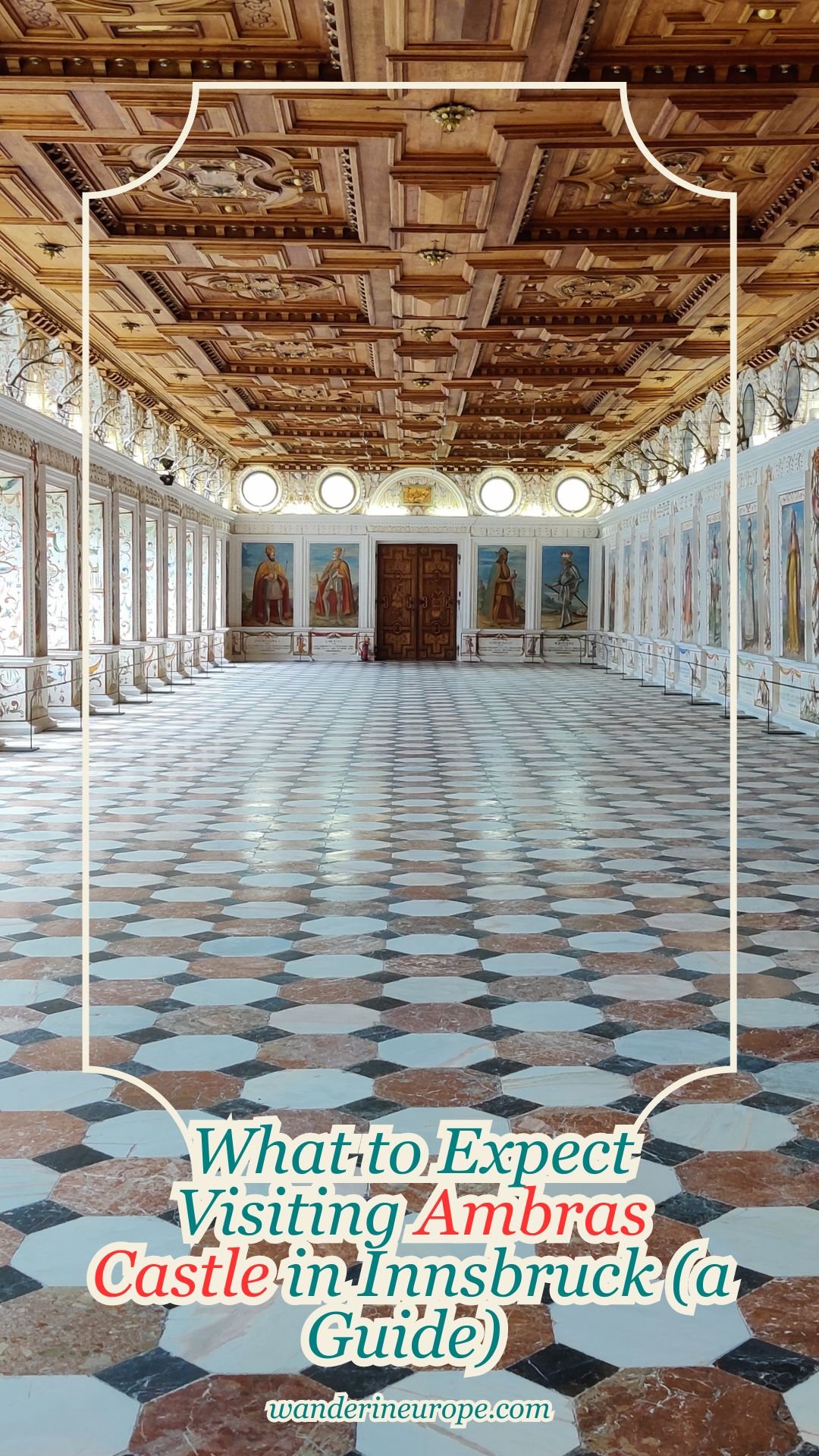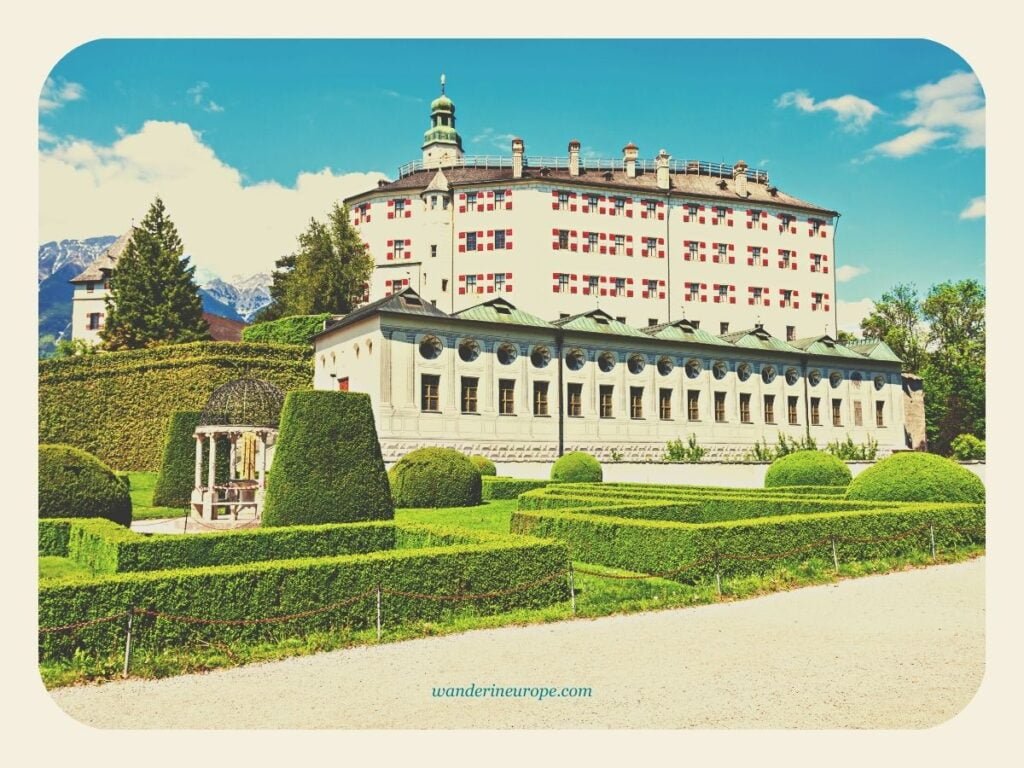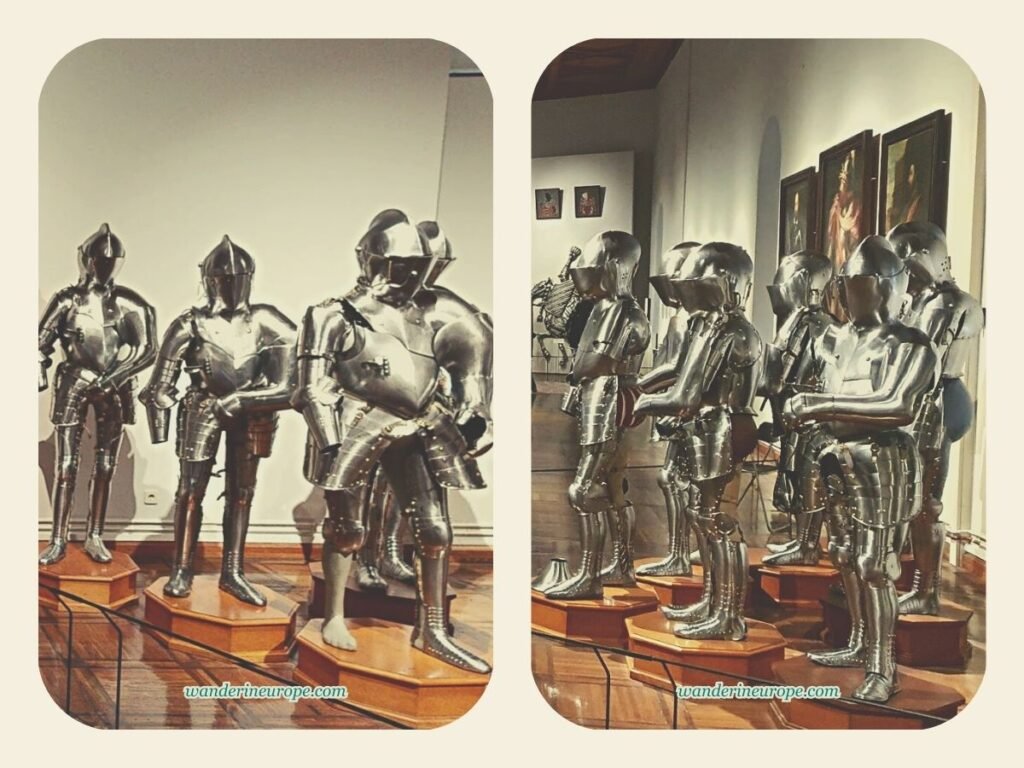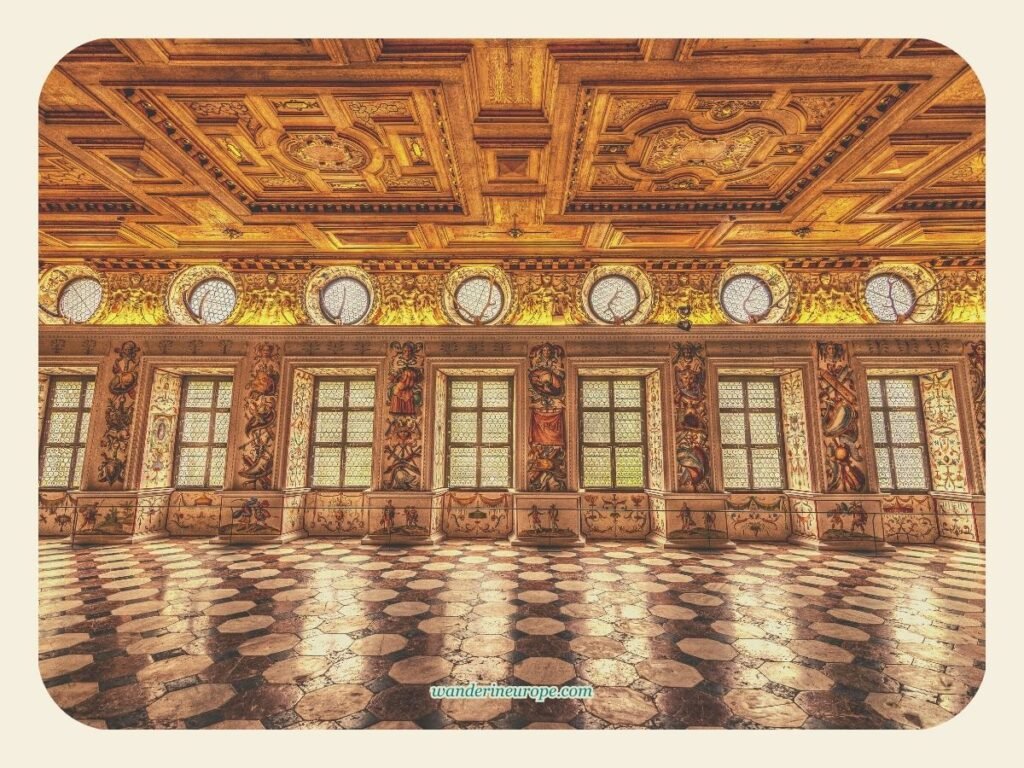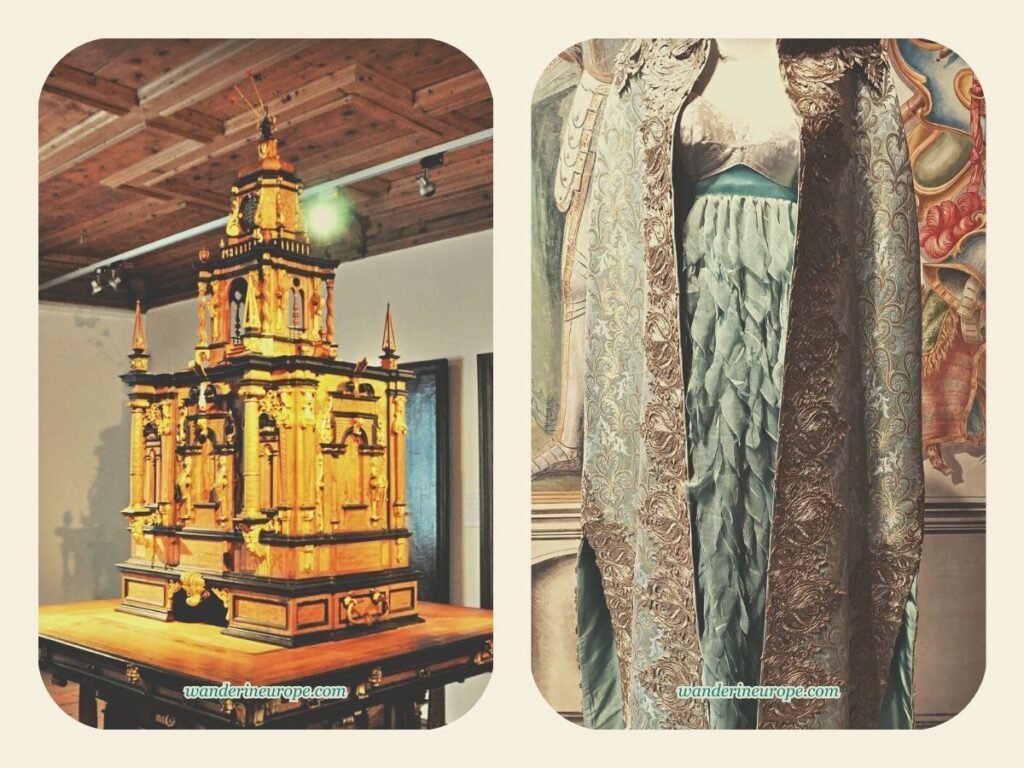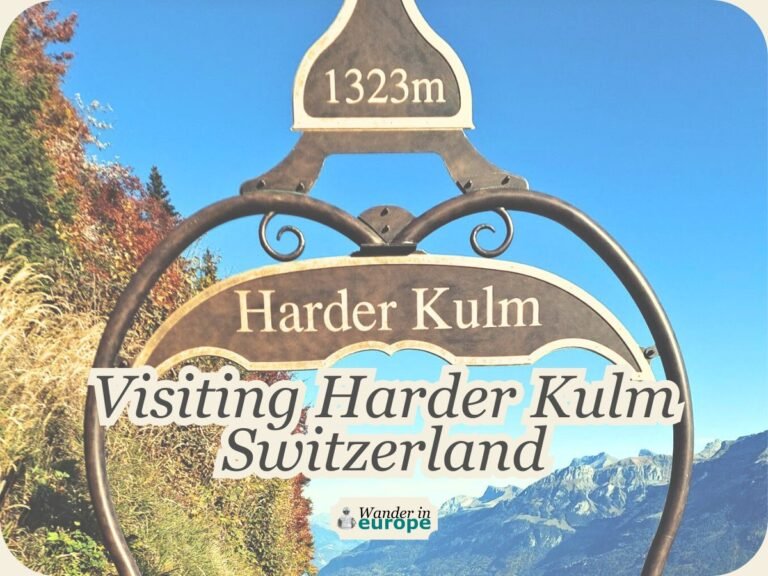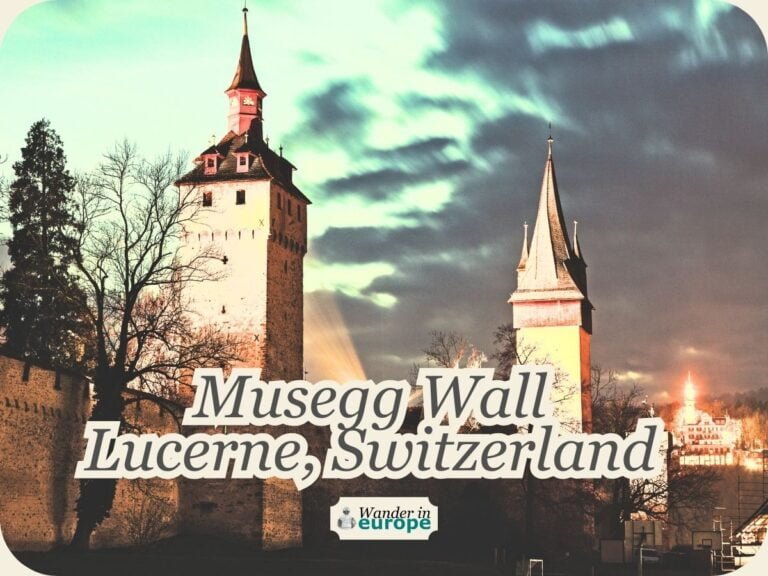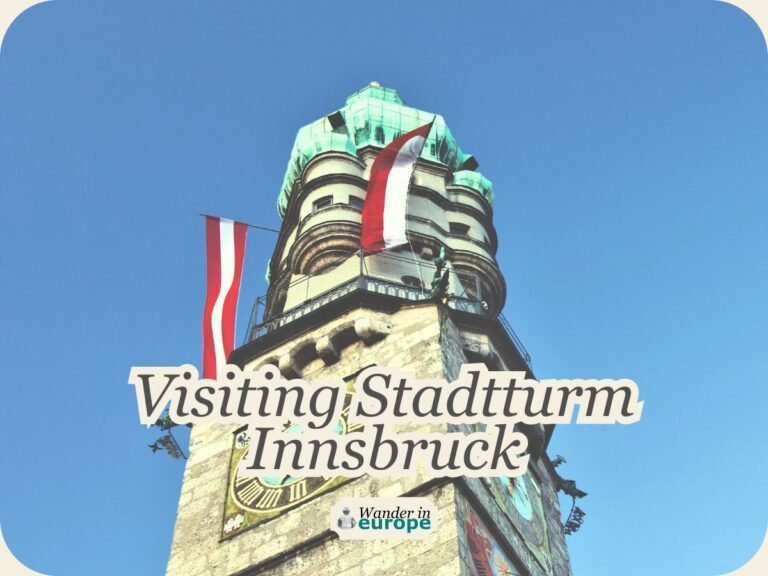What to Expect Visiting Ambras Castle in Innsbruck (a Guide)
Notes & Disclaimer: (1) Google seems to be having a hiccup. Please use other search engines to find more guides and articles from WanderInEurope. (2) This website is reader supported. And this post might have affiliate links. This means we could earn a small commission if you make a qualifying purchase. No additional cost to you. More info: Disclosure.
The fun in Innsbruck, thanks to Ambras Castle, continues even after you’ve finished exploring the Old Town: visiting its top attractions like the Golden Roof, Stadtturm, Hofburg, and Court Church, and discovering the picturesque spots and beautiful things that dot the city.
This castle, situated on the outskirts of Innsbruck, is one the attractions in Tirol that you can reach from the city center without breaking a sweat. It just seamlessly fits into plans whether you’re planning a one-day visit or a two-day stay in Innsbruck.
Okay, sure! But, is it worth it? Well, after wandering in its gardens, a haven for peacocks, admiring its architecturally elaborate Spanish Hall, and stumbling upon the carefully preserved exhibits of knight armors, here’s what I can say: Ambras Castle is a place that every wanderer would love to see during their trip to Innsbruck. And get this: there’s even more to look forward to at Ambras Castle!
To show exactly why Ambras Castle is a must-see, let me take you through all the beautiful and interesting things I discovered there.
Summary
In summary, Ambras Castle is a castle from the 16th century; one of Tirol’s most significant historical sites. It was built in the Renaissance style by Archduke Ferdinand II on the site of an 11th-century fortress as a gift for his wife, Philippine Welser. Being a prominent art collector, Archduke Ferdinand II also transformed Ambras Castle into a museum.
Remarkably, Archduke Ferdinand II’s collections are still housed in Ambras Castle, specifically in the Lower Castle. Today, though, not only artworks await inside Ambras Castle. In addition to artworks and armor collections, the Ambras Castle museum also showcases natural objects, weapons, musical instruments, scientific tools, and more.


In a way, visiting Ambras Castle is a unique experience. As you tour the castle with the audio guide, you’ll uncover the love story of Archduke Ferdinand II and Philippine Welser. The audio guide features recorded voices (voice actors) of Archduke Ferdinand II and Philippine Welser, making it feel as though the couple themselves are guiding you through their rooms, providing insights into their exhibits, and more.
All in all, these features, along with the impressive murals, artistic chambers, and picturesque Renaissance halls, make Ambras Castle absolutely worth visiting for anyone seeking beauty and new discoveries… And if you were to ask me, I would say Ambras Castle is among the must-see castles in Austria. I see Ambras Castle as Innsbruck’s version of Hohensalzburg and Hohenwerfen Fortresses in Salzburg, and Liechtenstein and Kreuzenstein Castles near Vienna; it’s Innsbruck’s ultimate fairytale attraction.
History
Here’s a tip: Before you go to Ambras Castle, it’s a good idea to learn about its history. This will make your visit more fun and help you understand why the castle is important. You’ll also learn how old different parts of the castle are, which will make your visit more interesting and feel like a trip through time.
Brief History of Ambras Castle
The story of the Ambras Castle begins in the 16th century with a young archduke named Ferdinand II. He was the second son of Emperor Ferdinand I and was appointed as the provincial sovereign of Tyrol in 1564.
Ferdinand II was a man of great vision and ambition, and he had a dream of turning the existing medieval fortress into a magnificent Renaissance castle for his wife, Philippine Welser. To make this dream a reality, Ferdinand II commissioned two Italian architects to transform the castle.
They worked tirelessly, and in time, the fortress was transformed into a grand residence fit for a queen. Ferdinand II even constructed a grand hall beneath the Upper Castle called the “Spanish Hall,” which became one of the most artistically important halls of the late Renaissance.
The castle became the residence of Philippine, and Ferdinand II used it to house his extensive collection of weapons, suits of armor, portraits, natural objects, rarities, and precious objects. The couple lived there happily until Ferdinand’s death in 1595.
After that, the castle fell into a state of disrepair and was eventually sold to Emperor Rudolf II in the early 17th century. After Ferdinand II’s death, the castle was no longer an official residence, and it was seldom lived in. Over time, inadequate preservation measures led to the loss of valuable books, manuscripts, and hand sketches, and soon the palace fell largely into disrepair.
Between 1855 and 1858, Archduke Karl Ludwig wanted to turn it into his summer residence, so he hired two architects, Ludwig and Heinrich Förster, to carry out his vision. The architects incorporated the popular Neo-Gothic design features into the castle’s renovation. They made significant changes to the castle’s appearance, including a new western facade in the form of a stepped gable for the Spanish Hall.
The Upper Castle’s keep was also increased by adding a fourth floor and crowned with a narrow turret. A stair tower reaching the second upper story and a balcony was added to the south facade. In addition to the castle itself, the architects made significant changes to the castle park.
The largest-scale alteration was the new approach ramp that was widely laid out from the Lower Castle to the Upper Castle. The front castle, which originally housed the dining hall, was transformed into ‘terrace story’ with battlements for added protection.
After the Austria-Hungary Empire dissolved in 1919, Ambras Castle became the property of the Republic of Austria. In 1950, the Kunsthistorisches Museum took over the administration of the castle and its collections. Throughout the 1970s, a comprehensive restoration took place, and several galleries were completed, including the Chamber of Art and Wonders, the Habsburg Portrait Gallery, and the Armouries.
Today, the art history museum Schloss Ambras Innsbruck is part of the Kunsthistorisches Museum Vienna, and visitors can explore the fascinating history of the castle and its collections.
In the resources section of this post, I’ve included a link to the full story of Ferdinand II and Philippine Welser.
Expectations
After exploring Ambras Castle, I think it can be divided into three distinct areas (Upper Castle, Lower Castle, and Castle Grounds). Four, when it comes to the kinds of fascinating things (Castle Museum, Exhibitions, Collections & Research, and Garden) that Ambras Castle offers to its visitors.
Armory
From the lobby, the Armory is one of the first parts you can see during your visit to Ambras Castle. It is where you can find Ferdinand II’s extensive collection of armor, weapons, and portraits that belonged to famous personalities of previous centuries.


More Information about Ambras Castle’s Armory
One of the notable things to see in the Armory is the Field Armor of Archduke Ferdinand II. It was worn by the archduke during his campaign against the Ottoman Empire and is a testament to the skill and bravery of the archduke. Visitors to the Armory can also see the sharp lances that were used in the Scharfrennen. These lances could weigh up to 20 kg and were used by sport-lovers during Ferdinand II’s time to get their thrills.
One of the must-see exhibits inside the Ambras Castle armory is the giant at the end of the room. This figure is a farmer character from Riva, a town located near Lake Garda. The giant is accompanied by the armor that belonged to the children of Ferdinand II and Philippine, Andreas and Karl.
Here’s a fun fact! The Armory of Ambras Castle was originally known as the Heroes’ Armoury, and it contained 121 suits of armor that had once belonged to Europe’s most famous military commanders. And based on the tour inside the castle, Archduke Ferdinand II faced quite a challenge in obtaining these armors from various knights and heroes. Because they often needed some persuading to part with them.
Going up to the second floor of the Armory (Baroque Armory), you’ll find a huge room with a ceiling painted in a stunning fresco known as the Starry Sky. I think it is yet another remarkable feature of Ambras Castle, as it’s a beautiful example of the Renaissance period’s fascination with classical mythology and astronomy.
This masterpiece was created by Giovanni Battista Fontana, an Italian painter who has several other works of art in various parts of Austria (i.e., frescoes in the chapel of Schloß Kaiser-Ebersdorf in Vienna). Marveling at the painting, you’ll see it depicting the twelve signs of the Zodiac in a blue oval and the constellations within the signs. There are also Planetary Gods depicted on the sides.
Here’s another fun fact! In the Starry Sky painting, there are characters from Greek mythology represented, such as Hercules, who was Ferdinand II’s admired hero and role model. Another notable character in the fresco is Perseus, who is shown holding the head of Medusa.
Apart from the spectacular Starry Sky painting, you can also find the armor and weapons from the Thirty Years’ War and Baroque period on the second floor of the Armory. The hall is flanked by armors on both sides, giving the impression of guards standing watch while the archduke walks from one door to another.
Chamber of Art and Wonders
After visiting the Armory, you can proceed to the Chamber of Art and Wonders. This chamber houses an extensive collection of natural objects, exotic items from distant lands, classical antiquities, and Mirabilia, which are incredibly strange and wondrous objects created by artists in the 16th century.

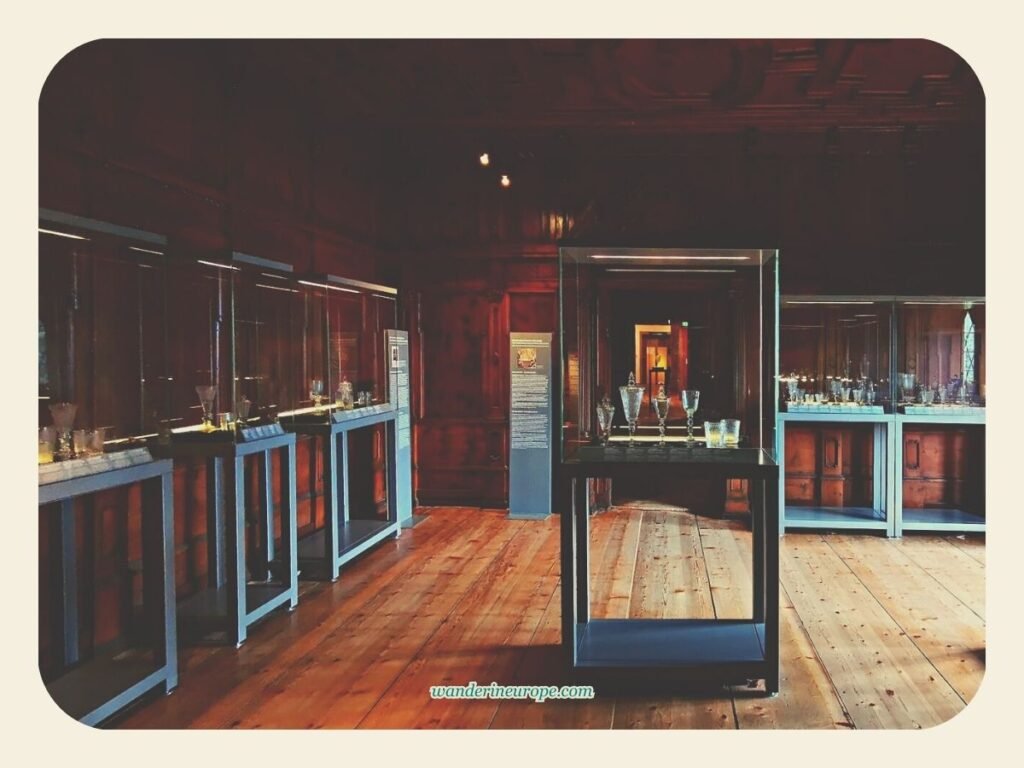

More Information about the Chamber of Art and Wonders
Exploring the exhibits in the Chamber of Art and Wonders feels like walking through a real-life encyclopedia, with an array of items covering everything from A to Z. Ferdinand’s inspiration for his museum came from Samuel Quiccheberg’s book on museums, which taught him how to collect and arrange objects for display. Samuel Quiccheberg is the librarian of Duke Albrecht V of Bavaria, a brother-in-law of Ferdinand II.
Two exhibits that caught my attention in the Chamber of Art and Wonders are Anna Welser’s book and the painting of Regina and Rubino, the beloved pets of Ferdinand II and Philippine. Anna Welser’s book provides insight into different cures using herbs and hygiene practices that were considered advanced for her time. Her book also includes recommendations for using clean utensils and separating illnesses affecting women, men, and children.
Spanish Hall
Do you want to be awe-struck by the beauty and grandeur? Don’t forget to see the Spanish Hall. For me, it’s the climax of a visit to Ambras Castle. The Spanish Hall of the Ambras Castle is one of the most splendid ceremonial halls during the time of Ferdinand II. The archduke asked artists and craftsmen from different parts of Europe to build and decorate it.


More Information about Ambras Castle’s Spanish Hall
While the true awe-inspiring spectacles of Ambras Castle are found within its halls, the door leading to the hall is a masterpiece in its own right. The intricately crafted door is a sight to behold and is sure to captivate visitors before they even enter the hall.
The Spanish Hall’s intricate door was crafted by Conrad Gottfried, a master of intarsia and cabinet making. He used a technique called fire shading, where the wood pieces are darkened by being placed in hot sand, creating greater depth and effect.
Upon entering the hall, one can’t help but be awestruck by the stunning painted decoration that covers the walls. The most striking feature of the interior is the 27 full-length portraits of the Tyrolean Counts that are proudly displayed throughout the room.
The series of portraits begins in the eastern corner with Count Albert I of Tyrol, then continues with the Counts of Gorizia-Tyrol and Margaret Maultausch, followed by the Habsburgs, and ultimately ends with the lord of the household of Ambras himself: Archduke Ferdinand II.
In addition to the portraits, the socle and window zones are adorned with allegorical figures and mythological scenes from Antiquity. They’re truly a feast for the eye.
On the east wall, the virtues are depicted, while on the north wall, scenes from the labors of Hercules are displayed. The west wall features depictions of the liberal arts and scenes from the history of Romulus and Remus.
The Spanish Hall stands as a freestanding building within the castle grounds of Ambras Castle. Adjacent to it is the Upper Castle, which by the way, has a beautiful courtyard. It features captivating artworks that are also not to be missed during your visit to Ambras Castle.
Courtyard and Upper Castle
Exploring the courtyard of Ambras Castle, you’ll quickly realize that it’s a place of beauty and mystery. Everywhere you look, you can discover something new. But, the most impressive aspect of the courtyard is the paintings and architectural illusions that give the impression of a more open and spacious environment. The trompe l’oeil windows on either side of the courtyard create a symmetrical effect that adds to the magic of the place.


More Information about Ambras Castle’s Courtyard and Upper Castle
As you explore the courtyard, you will come across several notable depictions, such as the woman with her foot on a globe. This depiction represents the personification of astronomy, with a planet at her feet. Her specialty is the movements of the heavenly bodies and their influence on human beings, so she must know all about the constellations and signs of the Zodiac.
Another interesting artwork that you will find on the walls of the courtyard is the depiction of drunkards. This artwork is part of the triumphal procession of Bacchus, the god of wine. It symbolizes Ferdinand II’s love of wine and his desire to showcase the fact that princely life is not all about duties but also joys and pleasures.
The Upper Castle is more than just its courtyard. In addition to what we’ve already discussed, there are many other things to see inside, including the Chapel of Saint Nicholas, the Ambras Wellness Refuge, the Habsburg Portrait Gallery, and special exhibitions that change periodically.
You can learn more about them from the official website of Ambras Castle, linked in the resources section of this post.
Visiting Information
Do you want to visit Ambras Castle? Note that it is open daily from 10 a.m. to 5 p.m. except for November, when it is closed. The admission fee for adults is 16 EUR, while reduced admission costs is 12 EUR.
For those looking to maximize their Innsbruck experience, purchasing an Innsbruck Card is recommended. The card provides free entry to the city’s museums (including Ambras Castle), one upwards and one downwards journey on lifts and cable cars, and free travel on the hop-on hop-off Sightseer bus, among other benefits. Swarovski Crystal Worlds and the Hall Mint Museum are also included in the card.
Note: Please remember to check for any announcements, updates, and holidays that may affect your visit to Ambras Castle. You can find this information on the official website of the castle, which is linked in the resources section of this post.
There are various ways to get to the castle, depending on your location.
- If you’re arriving at Innsbruck Hauptbahnhof, you can take Post bus line 4134, which passes through Kaiserschützenplatz, Olympiaworld, Leipziger Platz, Pacherstrasse, and Landessportcenter before reaching Schloss Ambras Innsbruck. If you’re coming from another location in Innsbruck, you can take Tram line 3, Bus line C, or Line 6.
- If you choose to take Tram line 3 towards Amras, you can get off at the ‘Philippine-Welser-Strasse’ stop and continue on foot for 1.2 km, which will take around 10-15 minutes. This route includes a steep climb along Amraser Strasse and Tummelplatzweg.
- Alternatively, you can take Bus line C towards Luigenstrasse and get off at the ‘Luigenstrasse’ stop, then continue on foot for 0.6 km, which will take around 10 minutes. This route involves a steep climb across the castle grounds.
- Another option is to take Line 6 towards Igls train station and get off at either ‘Tummelplatz’ or ‘Schönruh’ stop, and continue on foot for 0.4 km, which will take around 6 minutes. This route involves a steep downhill walk.
Schlossstrasse is the place where you can park your car if you go to Ambras Castle driving. It’s near the entrance to the castle.
You can only park there between 9 in the morning and 7 at night, and it costs 1 euro for every half hour that you park there. If you park for more than 5 hours, it will cost you 8 euros for the whole day. You have to pay with coins, and there’s no way to get change. There’s only one machine where you can buy a ticket to park.
How Much Time Here?
If you’re planning a trip to Innsbruck and want to visit Ambras Castle, it’s good to know that you should plan to spend at least 2 to 3 hours there if you want to see all the best parts of the castle. During that time, you’ll have a chance to explore both the Upper and Lower Castle, take a stroll through the castle’s gardens, and even take a break and grab a snack at the castle’s cafe.
Sources
I hope you find my post about Ambras Castle insightful and helpful. For further information, below are the websites you can check if you want to learn more about Ferdinand II, Philippine, and the Ambras Castle.
- Ambras Castle – Gift of Archduke Ferdinand II to His Wife Philippine
- Ambras Castle — Visiting Information (Official Website)
Are you planning a trip to Innsbruck? If so, I’d like to recommend my partner’s hotel search and booking platform. It’s my go-to tool for travel, and I’m a big fan of the deals it offers, like free cancellation and loyalty points. Please note, the link I’m providing is an affiliate link. This means if you make a booking through it, I might earn a small commission at no extra cost to you. It’s a fantastic way to support me as I research and create more content like this. Thanks for your support!

At the start, I mentioned that Ambras Castle is an amazing place to visit after exploring Old Town Innsbruck. Two other attractions that fall into the same category are Nordkette and the Tirol Panorama Museum. Nordkette is the closest mountain excursion from Innsbruck’s city center. The Tirol Panorama Museum, on the other hand, is the place to be if you want to see scenic views and a dramatic historical painting that includes that scenic view. Check them out!
Links open in a new tab.


